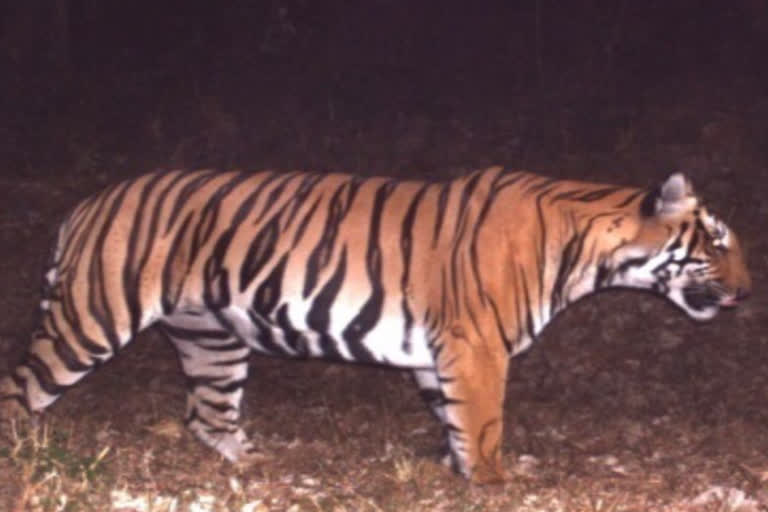Chennai: The Tamil Nadu forest department on Saturday stated that it has no plan to shift the T-23 tiger from Mysuru park in Karnataka to Arignar Anna Zoological Park in Vandalur.
The T-23 tiger killed four persons and mauled dozens of cattle to death in Masinagudi and Gudalur forest areas belonging to the Coimbatore district the last October. Subsequently, the forest department planned to capture the tiger by shooting. However, an activist filed a plea in the Madras High Court against the forest department's move to shoot the tiger dead.
Later, the court intervened and directed the forest officials not to shoot the tiger, but it could be captured alive. After 20 days of hunting, the forest officials along with locals, NGOs, and experts had captured the wild cat by tranquilising it near the Masinagudi forest area. Later, the big cat was transported to Mysuru park for treatment, as it was injured.
Talking to ETV Bharat, Tamil Nadu Chief Wildlife Warden Shekar Kumar Neeraj, said, "T-23 tiger is doing very well. Further, most of the injuries have healed. His food intake is about 15 kg of beef all days except Tuesday. We have no plan to shift the tiger as of now, as we are only looking at his well-being and conservation aspect from a broader perspective."
Also Read: Elusive 'man-eater' T23 tiger captured near Masinagudi, after 21 days
Meanwhile, wildlife activists suggested that the big cat, after a thorough study of its health and physiological behaviour, can be let off into its natural habitats.
Q. Ashoka Chakkaravarthy, wildlife biologist and assistant professor of environmental science at St Joseph's College pointed out "before releasing the tiger into the natural habitat, we have to follow the certain rules laid down by National Tiger Conservation Authority and Ministry of Environment and Forests. The wild cat can be translocated to tiger reserve forests, where there should not be human and cattle movement. Before releasing, the tiger's behavioural ecology and feeding habits should be monitored by a wildlife veterinary doctor."
He added that the forest officials should investigate the attendant of the T-23 tiger about day-to-day movement. He stated that if a man-eater tiger is about to translocate into the natural habitat, the area should have thick vegetation and should be rich in tiger prey. The Union Ministry of Environment and Forests and National Tiger Conservation Authority (NTCA) have laid down certain guidelines for transporting a tiger from one place to another place for better habitat surrounding the animal.
The guidelines state:
- A technical committee consisting of Chief Wildlife Warden, a nominee of NTCA, wildlife veterinary doctor, local NGO representative, field director, or District Forest Officer should be formulated
- A field van or mini-truck with built-in rails for accommodating a trap cage, with space for equipment, attendants, and staff
- A tranquilisation kit with drugs for chemical immobilisation
- Taser gun for instant immobilization of the animal and two mobile phones for continued communication with
the authorities - Four wireless handsets along with two GPS sets and one long ranging night vision for seeing objects in the
dark - The time of shifting wild animals should be within 24 hours



